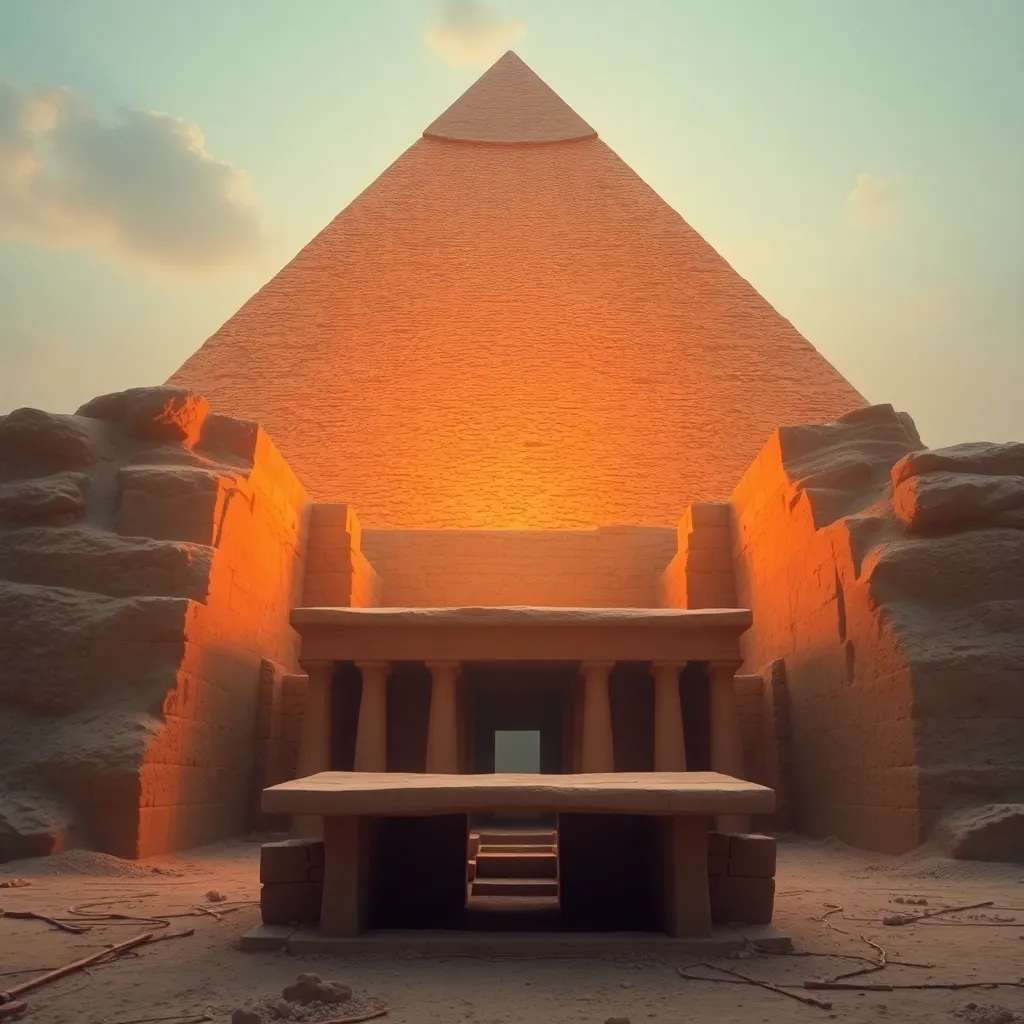The Excavation of Ancient Egypt: The Discovery of the Myths and Legends
I. Introduction
Ancient Egypt stands as one of the most significant civilizations in human history, captivating the imagination of scholars and enthusiasts alike. Its rich tapestry of culture, art, and religion has left an indelible mark on the world. Archaeology plays a crucial role in uncovering the myths and legends that shaped this ancient society, providing insights into their beliefs and practices.
This article aims to explore the excavation of Ancient Egypt, highlighting key archaeological discoveries, significant myths, and their implications on both past and present societies. We will delve into the historical context, explore the creation myths and deities, and examine how these narratives influenced daily life in Ancient Egypt.
II. The Historical Context of Ancient Egypt
The history of Ancient Egypt spans thousands of years, from the unification of Upper and Lower Egypt around 3100 BCE to the conquest by Alexander the Great in 332 BCE. This civilization was characterized by its remarkable achievements in architecture, art, and governance.
Ancient Egyptian society was structured around a theocratic system, where pharaohs were viewed as divine rulers, bridging the gap between the gods and the people. Religion permeated every aspect of life, and myths and legends were integral to their worldview. These narratives not only explained natural phenomena but also served to legitimize the pharaoh’s authority and reinforce social order.
III. Key Archaeological Discoveries
Numerous archaeological sites have played a pivotal role in revealing the mysteries of Ancient Egypt. Some of the major excavation sites include:
- Giza: Home to the iconic pyramids and the Great Sphinx, Giza is a treasure trove of artifacts that highlight the civilization’s architectural prowess and religious beliefs.
- Luxor: Known as the world’s greatest open-air museum, Luxor houses temples and tombs that depict various deities and mythological tales.
- The Valley of the Kings: This burial site of pharaohs, including the famous Tutankhamun, has yielded countless artifacts that shed light on beliefs surrounding the afterlife.
Famous archaeologists, such as Howard Carter and Zahi Hawass, have made significant contributions to our understanding of these sites. Their discoveries have unearthed artifacts like the golden mask of Tutankhamun and intricate wall paintings that narrate myths and legends.
IV. Myths of Creation and Deities
The creation myths of Ancient Egypt are diverse and complex, with various regions having their own interpretations. A common theme is the emergence of the world from a primordial chaos, often personified as the oceanic goddess, Nut.
Key deities and their legends include:
- Ra: The sun god, who represents creation and life, was believed to travel through the underworld at night and be reborn each morning.
- Osiris: God of the afterlife, Osiris was associated with resurrection and fertility. His myth involves his death and resurrection, symbolizing the cycle of life.
- Isis: Sister and wife of Osiris, Isis was considered a powerful goddess of magic and motherhood, known for her role in resurrecting Osiris.
- Horus: The sky god and the son of Osiris and Isis, Horus was often depicted as a falcon and symbolized kingship and protection.
These myths significantly influenced Egyptian art and architecture, evident in the grandeur of temples and tombs adorned with depictions of their gods.
V. The Afterlife and Its Legends
The afterlife held immense significance in Ancient Egyptian belief systems. It was viewed as a continuation of life on earth, necessitating proper burial and rituals to ensure a safe passage.
Myths surrounding the journey to the afterlife are encapsulated in texts such as The Book of the Dead, which served as a guide for the deceased. Key elements of this journey include:
- Crossing the perilous Duat (underworld)
- The judgment of the heart against the feather of Ma’at (truth and justice)
- Entry into the Field of Reeds, a paradise for the worthy
Discoveries related to burial practices, such as intricate sarcophagi and grave goods, have provided valuable insights into their beliefs regarding the afterlife.
VI. The Influence of Myths on Daily Life
Myths and legends were not merely stories; they shaped the daily lives of Ancient Egyptians. They influenced:
- Social Norms: Myths dictated moral values, guiding behavior and societal expectations.
- Festivals and Rituals: Many festivals were rooted in mythological events, such as the Opet Festival, celebrating the divine connection between the pharaoh and the gods.
- Literature and Storytelling: Myths were woven into narratives, serving as entertainment and moral lessons, often depicted in hieroglyphs and papyrus scrolls.
VII. Modern Interpretations and Misinterpretations
Modern interpretations of Ancient Egyptian myths have evolved significantly. However, misconceptions persist, often fueled by popular culture and media. Common misconceptions include:
- The oversimplification of gods as mere human-like figures.
- Misinterpretation of the afterlife beliefs, often depicted inaccurately in films and literature.
- The romanticization of pharaohs and their lives, overlooking the complexity of their society.
Such misinterpretations can distort our understanding of this ancient civilization and its profound beliefs.
VIII. Conclusion
The excavation of Ancient Egypt has been instrumental in uncovering the rich tapestry of myths and legends that defined this remarkable civilization. These discoveries not only illuminate the past but also resonate in contemporary society, reminding us of the timelessness of human storytelling and belief.
As archaeology continues to evolve, the ongoing exploration of Ancient Egyptian mythology will undoubtedly yield new insights and further enrich our understanding of this ancient world.




